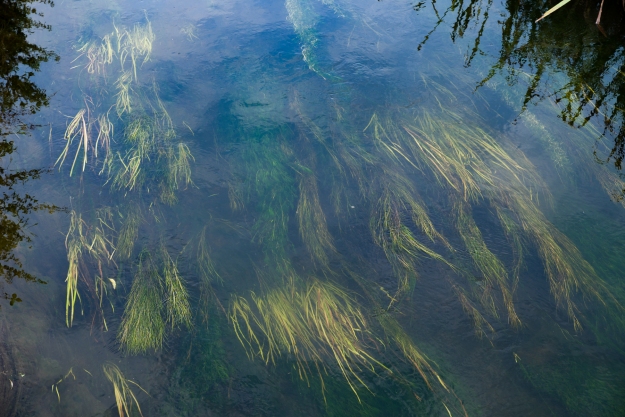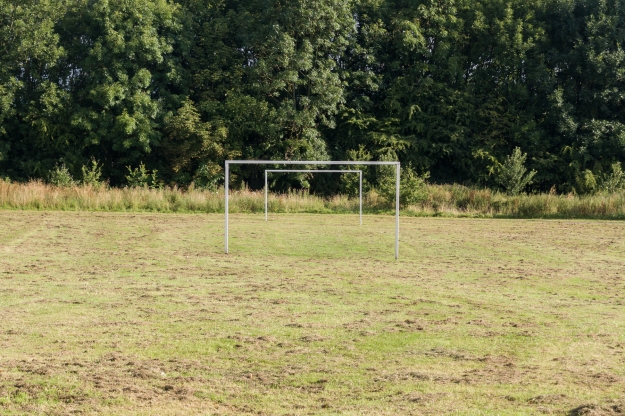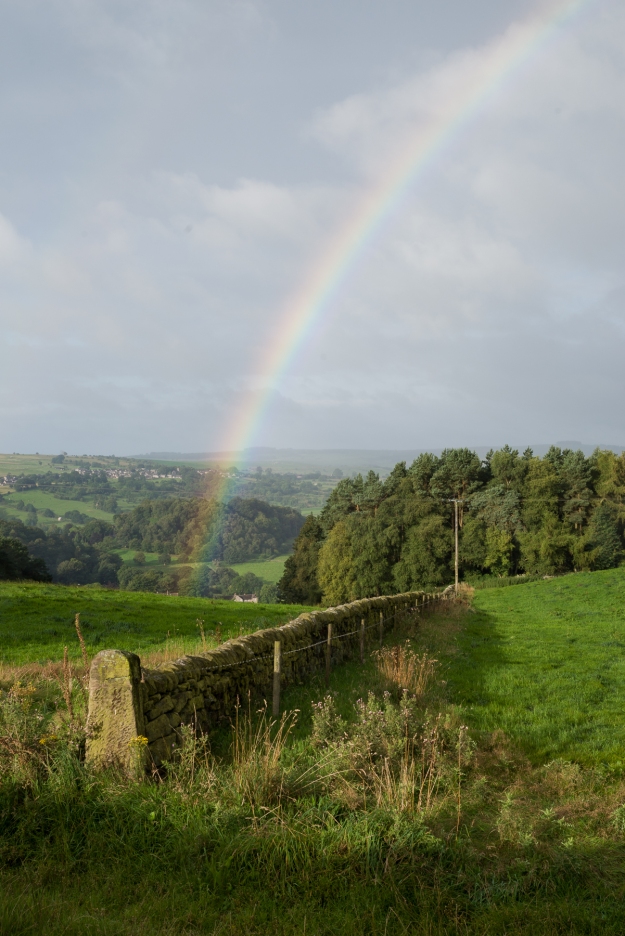Overview
In this assignment I tried to understand what Thomas intended the poem to be about and interpret that within the context of images of my own childhood landscape.
I have chosen photographs which might be interesting sights from nature which are transient in nature and so easily overlooked. Hopefully the viewer will draw upon their own emotions and background as to what they mean for them – spiders, water, midges for example might carry happy or unpleasant memories for different people.
The sequencing of the images was chosen to simulate how the human mind tries to be in the present, but is then interrupted by memories of the past or other distractions. Our minds do not work in a linear way. Concentration is easily broken making it harder than it sounds to enjoy being in this moment for long.
Analysis of the images
Looking at the images in sequence with more information about my intended meanings:
- Flowing: An attempt to start the work by focussing the viewers attention on what is below his/her feet, grounding them in the ‘here and now’. How often do we look at what is directly below us when crossing a bridge? Looking straight down on a river from above the weeds in the flowing stream almost look like a willow tree taken from the side. This changed constantly as the weeds moved with the flow – another photograph taken seconds later would look different.
- Mown: Taken back in the mind to a childhood playing field, the viewer might interpret this in different ways – happy memories of junior football prowess with friends, or perhaps abandonment, the pitch being apparently deserted and featureless.
- Blue Canvas: Clouds fascinate me for their unique and apparently infinite different formations. Like an abstract painting in the sky, happening right above us. But how often do we notice them?
- Anticipation: Once again back to a childhood pursuit, filled with wonder and expectation as to what the future might hold (i.e. might we catch a fish? How big?). I’m curious to know what the fisherman is keeping in the bag suspended in the tree.
- Hatch: Midges hatching on the river bank. Living each moment to its maximum potential, unwittingly constrained by an incredibly short lifespan of possibly just one day. How did they acquire the learning that there is safely in numbers so quickly? For me this raises questions about whether we can afford to waste large portions of our lives thinking about the past and the future rather than living in this moment like the midges.
- Full Time: I find it interesting that the commemorative board for the ex-mine emphasises the gloomy blackness of the pit workers contrasted with the family happily enjoying the same space for recreation. Is the loss of an entire industry progress? The quotation places the setting as DH Lawrence’s Eastwood in Nottinghamshire. The grown man stands in another ‘goal’, perhaps reflecting on what has actually been won.
- The Silk Road: Another interpretation on how temporary and impermanent things are, to be cherished as they come into our lives? Or maybe a warning not to get stuck in the past like a fly in a web?
- The Old Clock Ticks. The surrounding area has various stone circles from the neolithic era. At certain times light will momentarily illuminate different stones creating questions about their significance and the transitory passage of time though our lives. Shortly after taking this photograph the sun continued its trek across the sky and the moment was gone, throwing the whole area into dull shadow.
- The Rainbow Bridge: Some cultures have a concept of a ‘rainbow bridge’ that the deceased cross to an afterlife. Following our dreams can indeed present a pot of gold for us but we cannot know what the future holds for sure. Is being lucky enough to witness this phenomena the real prize? What is really at the other end? Rainbows only arise when good weather and bad weather exist in equal measure.
The images were selected from the following ‘contact sheet’ and were shot on both full frame and APS-C digital cameras over a series of walks during the past four weeks (longer walks of 10 miles+ necessitated the carrying of a smaller camera).
Lightroom (_IMG0453.DNG and 34 others)
To ensure consistency of colour rendition when using different cameras for the same set, custom colour profiles were created for each camera using a Colour Checker Passport:
http://xritephoto.com/colorchecker-passport-photo
Self assessment against the course criteria:
- Demonstration of technical and visual skills (40%) – In this assignment I’ve tried to ‘see the less observed’, the everyday magic of life that we overlook in our obsession for being in either the past or future. Hopefully the viewer will see these mundane things as worthy of more of their attention. The final version to be submitted for Assessment will probably take the form of a photobook so the viewer can take a journey through a photo album in a very physical sense too.
Mundane items have also been used as signifiers for the past as well – fishing, goalposts, mines – but have metaphorical ‘hooks’ (literal in the case of fishing!) to playtime, miners strikes, etc. that many of us will recollect.
For the future element, I initially looked to provide more obvious signifiers of death and inevitability – there’s a dead bird on the contact sheet, for example. But the point is that the future is not determinable. ‘The Old Clock Ticks’ intends to convey a sense of mystery and uncertainty (what is hidden in the deep shadows with the stone circle?) while also signifying the ‘shaft of light’ that many who have experienced near death experiences speak of. ‘Rainbow Bridge’ hint at this, ruined dreams and disappointment in less obvious ways too, leaving room for the viewer to find their own interpretations.
- Quality of outcome (20%) – I agonised for some time as to the order in which to present the individual images before deciding that I wanted to reflect the way the mind flits between past, present and future, finding it hard to just be in the present moment for long. The risk is that the viewer might find it random or incoherent how the images have been sequenced.
I debated whether to include the poem at the beginning or end. I even considered breaking it up into sections, interspersed throughout the images. Finally I considered coupling sections of the poem as titles for each image, which forced too literal a link. I eventually opted to place the poem at the beginning but I’m still not sure that I’ve fully settled this debate in my mind yet. So this could change again before submitting a final printed version for Assessment.
- Demonstration of creativity (20%) – The pursuit of this assignment required walking more than 30 miles in and around the landscape where I grew up to re-discover places and the drivers for my personal nostalgia. As suggested by the course materials, I also understood to study more deeply around creative writing and poetry in particular to tease out what Thomas was trying to get at in Bridges.
Looking back over the this course, Context and Narrative and this Assignment in particular, I feel that I have an emerging personal voice centred around themes of how we relate to our landscape and fellow humans. Like Keith Arnatt, or Tillmans have inspired before, I see a beauty in the mundane – the shape of trees, the flow of water and a sense of melancholy in all of it based on the way we treat what is all around us.
- Context (20%) –The course materials coupled with the Text chapter in Context and Narrative (Short, 2011) have opened up new ways for me us use test in my work, both as content and as inspiration. I have sought to dig deeper into the less superficial meaning of a poem and re-tell the same story through photographs. I’m pleased with how I feel the work urges the viewer to consider what they are missing in the present moment, to be honest about whether they spend their time in the past or future with all the emotional attachments that come with it. Equally, I don’t think it tells the viewer what to think. It gives room for their own memories and fears. This Assignment has opened up the potential for using poetry to inspire photography. A close friend is a published poet and we are already discussing how we can take this further as a joint project.
References:
Short, M. (2011) Basics Creative Photography: Context and Narrative (Basics: Creative Photography). Worthing, UK: AVA Publishing
Sontag, S. (1979) On Photography. London. Penguin
Thomas, E. (first published 1917) The Bridge. At: https://www.poemhunter.com/poem/the-bridge-33/ (accessed on 10.09.17)









